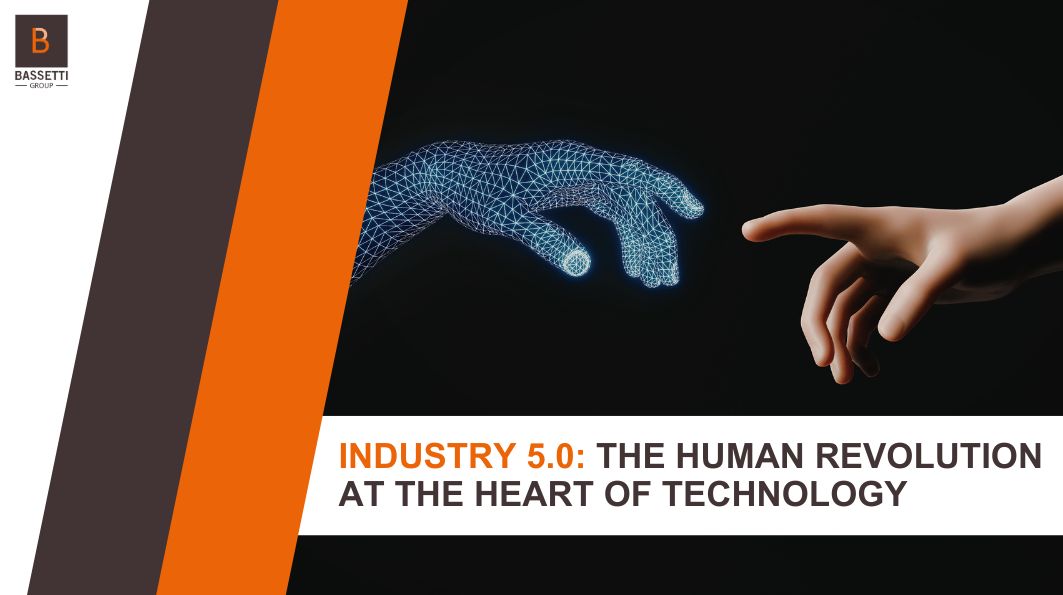Industry 5.0: The Human Revolution at the Heart of Technology
The next industrial revolution won’t be driven by machines, it will be driven by meaning.
While Industry 4.0 was the revolution of automation and data, connecting machines to create smart factories, Industry 5.0 marks a decisive turning point. It does not replace the previous era; it enhances it. This new industrial age puts the human back at the center, pursues a goal of sustainability, and builds economic and societal resilience.
This transformation is not theoretical; it is already infusing the most demanding sectors: from aerospace to agrifood, from automotive to defense, as well as luxury goods, metallurgy, medicine, and energy. Forget the vision of a dehumanized factory — the future of industry is a synergistic collaboration between human intelligence and the power of machines.

How is materials management evolving in the era of Industry 5.0?
1. The crucial importance of materials in modern industry
Materials are the foundation of any industrial product. The safety of an airplane, the biocompatibility of a medical implant, the durability of a wind turbine, or the safety of food packaging all depend on their composition. In sectors like metallurgy or transportation, the choice of an alloy or a composite defines the final product’s performance, weight, and energy efficiency. Mastering this resource is therefore a strategic imperative: one that shapes competitiveness, safety, and sustainability.
2. What is the contribution of Industry 5.0 in materials management?
Industry 4.0 digitized our knowledge of materials. Industry 5.0 uses this digitization to serve a greater ambition: responsible, human-driven performance.
a. Data centralization for eco-design and expertise
Digital platforms (PLM, LIMS) like TEEXMA are evolving into 360° decision-support tools. They no longer centralize only technical data.
Augmented Structuring: Material characteristics now include their carbon footprint, recyclability, ethical origin, and compliance with standards (REACH, etc.).
Human-Machine Collaboration: An automotive engineer can compare traditional steel with recycled aluminum, visualizing the impacts on safety, cost, and the environment. In the luxury or textile industry, a designer can validate a new bio-based material, ensuring it meets both durability and aesthetic requirements. AI proposes, but the human expert decides.
b. Simulation and innovation for sustainable performance
Simulation tools, inherited from Industry 4.0, are now used to serve Industry 5.0 objectives.
Eco-simulation: Before launching a physical prototype, the product’s entire life cycle is simulated. An actor in the aerospace industry can evaluate the environmental impact of a new part over 30 years, from its manufacturing to its maintenance and recycling.
Waste Reduction: By virtually testing alternatives, the need for physical prototypes is drastically reduced. The result? Less waste of rare raw materials, faster time-to-market, and greener innovation across all sectors.
What is the new role of human expertise in R&D and laboratories?
1. Testing and validation: pillars of quality and safety
The laboratory is the guarantor of the industrial promise. Whether it’s validating the non-toxicity of an agri-food product, ensuring the reliability of a guidance system for defense, confirming the efficacy of an active ingredient in pharmaceuticals, or testing the resistance of an automotive chassis — the rigor of testing is non-negotiable.
2. The contribution of Industry 5.0 to laboratories
a. Optimized management to unleash human potential
The goal of digitalization is no longer just to speed up tests but to elevate human expertise.
Automation of low-value-added tasks: Laboratory Information Management Systems (LIMS) automate test scheduling, raw data entry, and the generation of standard reports.
Refocusing on expertise: Freed from repetitive tasks, a technician in metallurgy can focus on analyzing an abnormal failure. A researcher in pharmaceuticals can spend more time interpreting clinical trial results rather than administering them. The human evolves from machine operator to innovation driver.
Skills evolution: This shift is redefining roles across R&D and production. Engineers are becoming data interpreters, analysts are becoming sustainability strategists, and technicians are learning to collaborate seamlessly with AI tools. Industry 5.0 is not replacing expertise — it’s amplifying it.
b. From traceability to knowledge capitalization
Digital transformation turns the laboratory into a living, learning organization.
Living Technical Memory: Every test, every result, every report is indexed and becomes part of a dynamic knowledge base. A young engineer in the energy sector can access 20 years of data on the aging of turbine materials.
Collective Intelligence: This capitalization facilitates collaboration between teams. Data from the laboratory feeds design teams in real-time, creating a continuous improvement loop and accelerating the resolution of complex problems.
Why transparency and resilience are the pillars of the value chain
1. The challenges: beyond simple compliance
Global crises have shown that efficiency at all costs creates fragility. Industry 5.0 addresses this risk head-on: the goal is no longer just regulatory compliance, but the construction of a robust, ethical, and transparent value chain capable of enduring disruption.
2. Digital tools for a resilient value chain
a. The “Digital Product Passport”: 360° traceability
Technologies like blockchain now enable complete traceability — a verifiable identity card for every product.
Critical Sectors: In aerospace, space, and defense, the origin and history of every single screw can be verified. In pharmaceuticals, drugs are tracked from the factory to the patient to eradicate counterfeiting.
Consumer Sectors: In agri-food, it’s the “farm-to-fork” guarantee. In automotive, battery minerals are traced. In luxury, authenticity and ethical sourcing are proven.
b. From data to strategic decision-making for resilience
Transparency is not an end in itself — it’s a management advantage.
Risk Mapping: By visualizing their entire supply chain (Tier 1, 2, 3 suppliers…), companies can identify points of weakness such as geographic dependence or single-supplier risks.
Proactive Decision-Making: With this insight, they can diversify resources, relocate production, and anticipate shocks — ensuring business continuity and long-term competitiveness.
Embracing Industry 5.0
Industry 4.0 built the connected and efficient factory. Industry 5.0 gives it purpose.
By placing human-machine collaboration, sustainability, and resilience at the heart of strategy, this new paradigm does more than meet consumer expectations — it redefines industrial performance itself.
For industrial leaders, the question is no longer if but how to align technology with human and environmental purpose. The organizations that succeed won’t just produce better — they’ll produce meaningfully.
Industry 5.0 is not the end of automation. It’s the beginning of a human revolution.
How We Can Help You Embrace Industry 5.0
At Bassetti Group, we help organizations bridge the gap between data and expertise. Through innovative solutions like TEEXMA, we empower engineers, researchers, and decision-makers to:
- Centralize and structure material and laboratory data
- Leverage AI-driven insights while preserving human expertise
- Accelerate eco-design and product innovation
- Strengthen traceability, compliance, and value chain resilience
Industry 5.0 is about using technology to augment human potential, and that’s exactly what we do.
